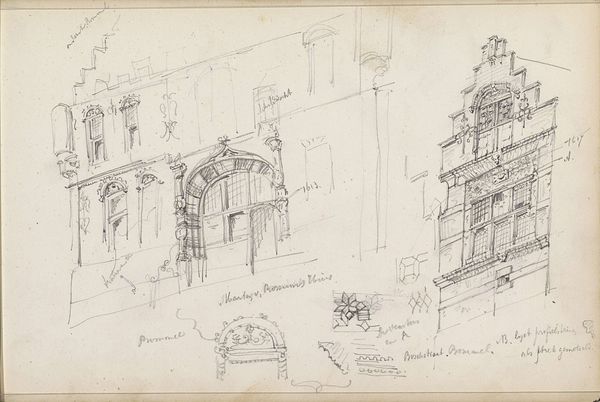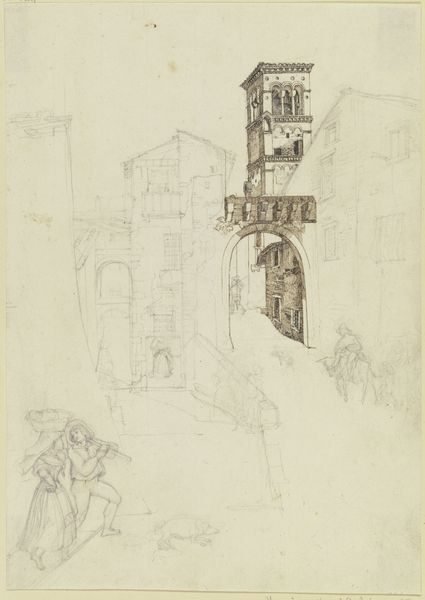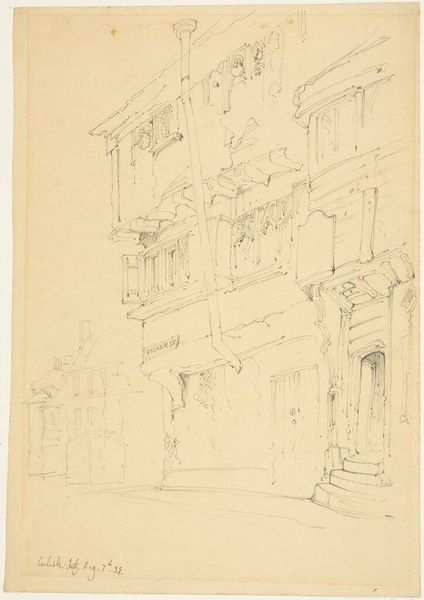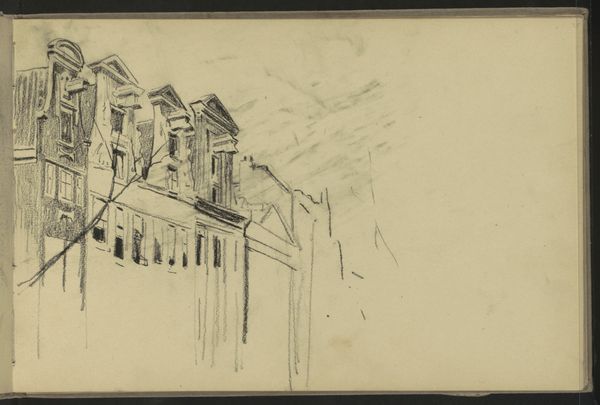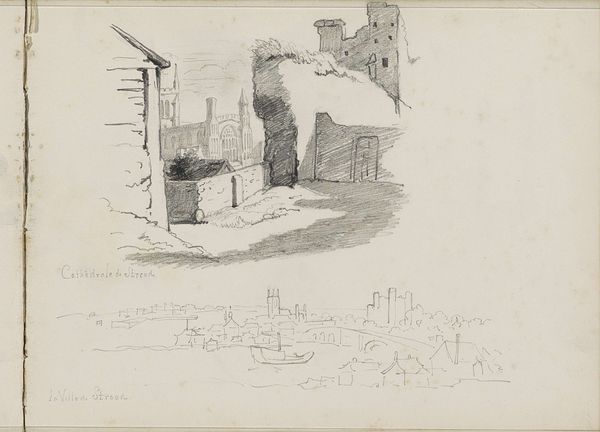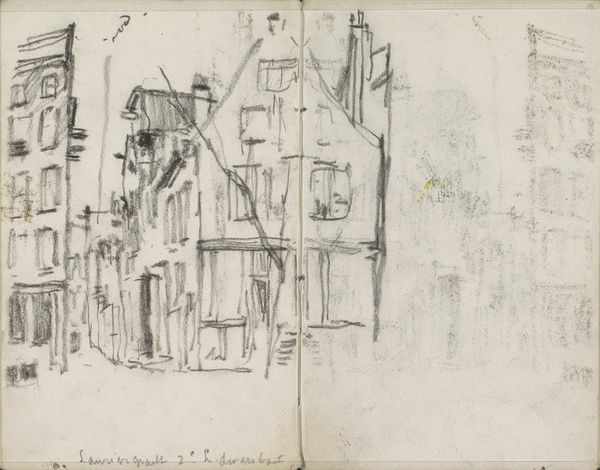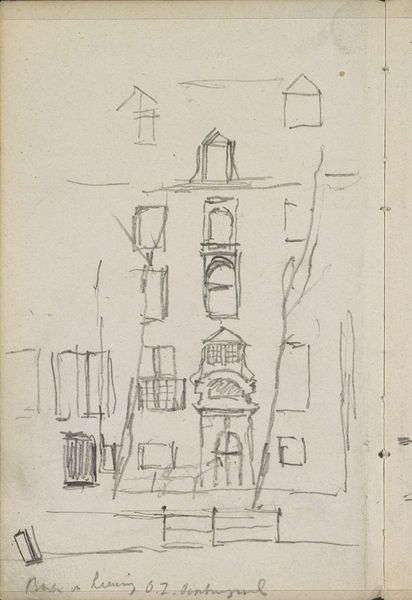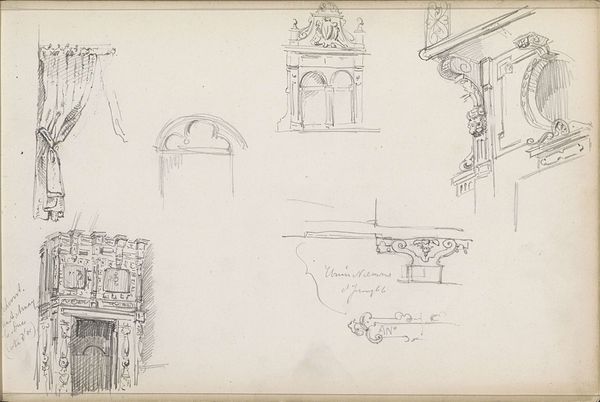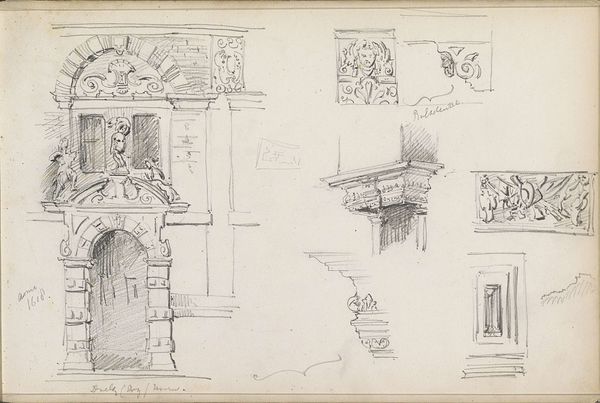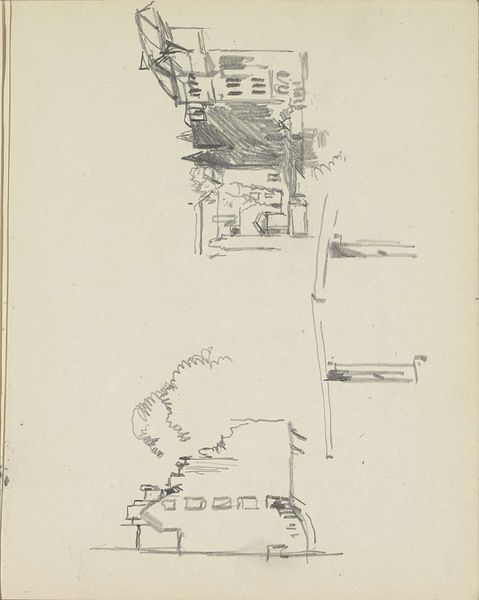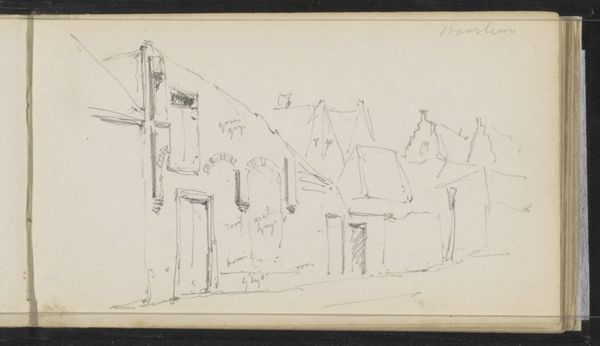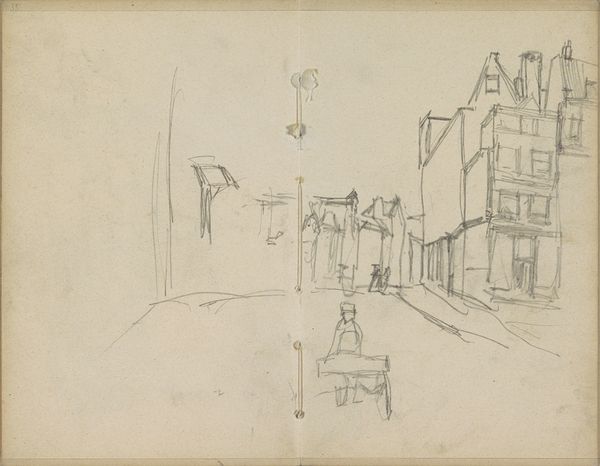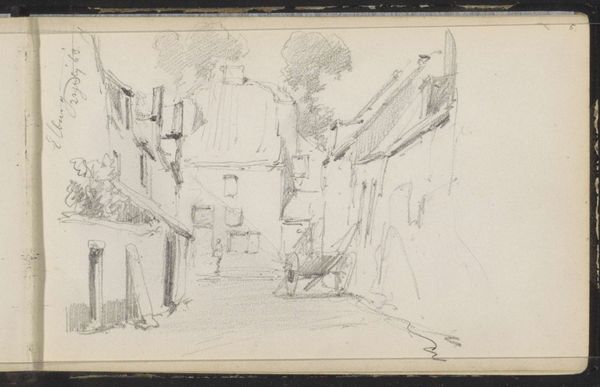
drawing, pencil
#
drawing
#
landscape
#
pencil
#
cityscape
#
realism
#
building
Dimensions: height 104 mm, width 160 mm
Copyright: Rijks Museum: Open Domain
Editor: This pencil drawing from 1882, titled "Gevels van huizen aan de Kloveniersburgwal te Amsterdam," is by Jan Hoynck van Papendrecht. I’m struck by how the artist captures the distinct architecture, almost like a visual record. What can you tell me about this cityscape? Curator: Well, look closer, and you will start to perceive social stratification. Architectural facades often serve as reflections of wealth and status, and the intricate details become markers of identity within a rapidly changing urban environment. How does this understanding change how you interpret the artwork? Editor: I hadn't thought of that, I guess I focused too much on the "realism" tag associated with the work, instead of thinking of these buildings and architectural choices as signifiers. Curator: Exactly! This piece emerged from a specific moment, within debates on national identity and artistic representation. Papendrecht documented this street during a time of massive urban redevelopment in Amsterdam. This historical and sociopolitical context is crucial. Do you think his position in society would change how he represents such place? Editor: Perhaps if the artist belonged to the lower class, we could read into this drawing as a form of social commentary? Almost an appropriation by the upper classes? Curator: Precisely. Even the simple act of sketching becomes a political statement. It begs the question of who gets to represent and define urban space. What social class does this architecture caters to? Are there hints of other social interactions? Editor: I see what you mean. Considering that these drawings focus on building facades, the work almost erases any form of subaltern social activity within it. Focusing instead on what is meant to be projected. Curator: Now, can you consider how this piece intersects with modern-day debates about gentrification, public space, and historical preservation? Editor: Seeing this piece with a historical and social lens offers so many different approaches, It makes me question my own interpretations. Thank you! Curator: The point is for art to initiate conversation. It means looking past what is represented and interrogating why.
Comments
No comments
Be the first to comment and join the conversation on the ultimate creative platform.
